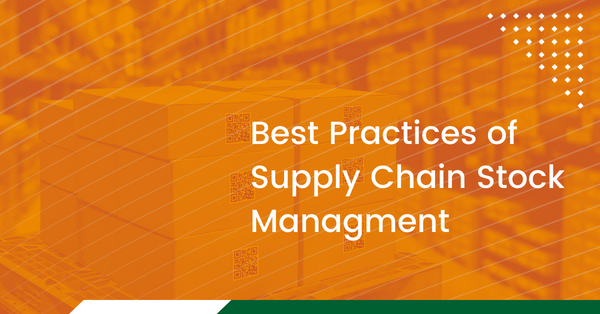Why is supply chain stock management critical?
Supply chain stock management covers the whole lifecycle of products you offer to consumers, from purchasing raw materials to reaching the destination of the end customer. It refers not only to how promptly your business meets the expectations of potential consumers but also shows how you respond to sudden market changes. Equally important is the organization of outbound logistics operations, which directly proves the efficiency of your order fulfillment strategy.
On the supply chain level, stock management can reflect possible areas for improvement in your business. Adopting advanced supply chain stock management can increase the timeliness of the supply of materials and the production quality, streamline order fulfillment, and optimize the duration of shipping operations.
Advanced stock management solutions
The current level of competition requires professional supply chain stock management solutions aimed at the technologization of processes and increased customer experience personalization.
Reviewing sourcing strategies
Reliable vendors are a core asset of any business. However, it doesn’t oblige you to limit yourself to a few options. Finding alternative supplying sources can give you more freedom to control the quality and price of the final product. Moreover, it will ensure continuous stock replenishment and insurance against unforeseen situations.
For example, many businesses have suffered from supply shortages during the pandemic, unable to hit their sales targets due to empty shelves. The post-pandemic surveys show that relying on a small number of suppliers does not work well in the face of a volatile market and ever-increasing customer expectations for delivery speed. A wise solution is to research new supply centers and contact local vendors, significantly reducing the duration of materials transportation.
Enhancing inventory visibility
Understanding the right time and quantities for stocking your products lays the foundation for successful supply chain stock management. As long as you supervise the regular product replenishment, your gross margins (based on selling intervals), and sell-through rate (products sold vs. products stocked), you’ll be able to avoid common inventory issues like overstocking or stockout. All these indicators will help you establish the products’ consumption value and adjust deliveries to the most suitable warehouses, letting you reduce unnecessary costs and rethink your investments.
However, modern inventory visibility goes beyond standard stock awareness. Today, you need to follow your products throughout their entire life cycle. In contrast to static stock management (stored product data), a dynamic approach involves tracking products in transit until they reach their consumer. This method allows you to eliminate shrinkages that often occur at the transportation stage due to loss and damage of goods.
As for transport operations, inventory transparency is among the primary means of saving here. For instance, determining the geographical areas where your products are not too popular can reduce the frequency of deliveries to them while avoiding accumulating unsaleable goods. Using strategically located storage centers, you can take advantage of shipment consolidation programs and proactively respond to spot shipments.
Implementing demand forecasting
While businesses used to aim to cater to the specific needs of a particular customer persona, in today’s competitive and all-consuming e-commerce environment, you must exceed expectations and anticipate your customers’ requests. Companies extensively use demand forecasting tools to achieve this and research their customers from different perspectives. This technique can help you identify your brand’s most desired products and conditionally rank your entire stock by popularity. That way, you’ll know which products will make you the most money to produce and supply versus those that could potentially result in dead stock.
Typically, companies implement demand forecasting using two approaches: analyzing previous sales figures and developing the most likely consumer requests based on expected market conditions. In the first case, you will rely on the volume of orders and sales for a specific period, thus addressing your regular buyer. In the second case, you will identify those products that can expand your audience and attract the attention of new customers. Today, demand forecasting is driven by technology, particularly artificial intelligence developments, that can quickly gather the necessary information and form predictions.
Securing appropriate transportation capacity
One of the final stages of the product life cycle before its direct distribution depends on working with a reliable shipping provider. The convenient carrier should be a logical extension of your supply chain stock management, providing the necessary means to control your goods during transportation. They include effective communication and reporting, compliance with security measures, and the ability to track the movement of orders. Nowadays, carriers are looking to improve the transparency of their performance, thereby providing shippers with better stock visibility in transit.
You can secure the necessary transportation capacity with the help of 3PL companies, which leading representative is PLS Logistics Services. This approach will allow you to significantly improve your supply chain stock management by getting reasonable rates, assistance with organization and documentation, and peace of mind in finding professional carriers during peak seasons.


